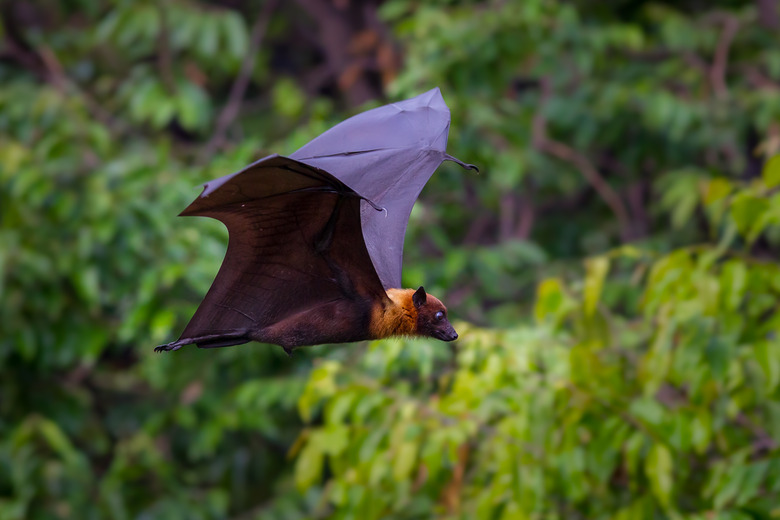Animals That Use Echolocation
Humans and most other animals see using light waves. Light reflects off the objects around you and reaches your eye, which provides information about the world around you. Sound waves can be used in exactly the same way to "see." Some animals use echos — sound waves reflected off objects in their path — to navigate and find food at night or in dark locations such as caves. This is known as echolocation.
Bats
Bats
Bats emit pulses of high-pitched sounds — beyond the range of human hearing — and then listen for the echoes that are produced when these sound waves bounce off objects around them. The folds in a bats ear are uniquely suited to detect these echoes which give them information on the location, shape and size of surrounding objects, including really small objects such as mosquitos. Bats can also use echoes to tell the direction an object is moving.
Whales and Dolphins
Whales and Dolphins
Marine mammals such as whales and dolphins also use echolocation to locate things at long distances, beyond the range of vision, and also in the depths of the ocean where it is very dark. Whales use echolocation for navigation and to locate food. Dolphins also emit clicks with their nasal tissue and use the echoes to find their way around and to hunt. They also use echolocation to communicate with other members of their group and to avoid predators.
Oilbirds and Swiftlets
Oilbirds and Swiftlets
Echolocation is rare among birds. Two species of birds that live in caves and are known to have developed echolocation are South American oilbirds and swiftlets. Oilbirds emit clicks and use the echoes to hep them navigate in total darkness. Swiftlets use echolocation for navigation in the dark and also for social purposes. The ears of these birds, unlike those of bats, don't show any modifications that make them particularly suited to echolocation.
Shrews
Shrews
Shrews are known to emit ultrasonic sound and use the echoes to locate insects and other prey. They open and close their mouths rapidly to emit quick pulses of low intensity sound as they get closer to their prey. Shrews also use echolocation for navigation. They find their way through leaf litter or in the darkness of tunnels under snow with the help of echoes produced by sounds they emit.
Humans
Humans
Sonars and radars, used by people for navigation and to locate objects, are forms of echolocation. In fact, the development of these technologies was inspired by the work of zoologist Donald Griffin who discovered how bats navigate and coined the term "echolocation." Some blind people have developed the ability to locate obstacles by making clicking sounds with their tongues and listening for echoes. A new study shows that blind people who can echolocate actually use the visual parts of their brains.
References
- University of South Florida College of Marine Science: Project Oceanography: Sound Use by Marine Mammals
- Live Science; Blind People 'See' Shapes, Navigate Using Echoes; Stephanie Pappas; 2011
- University of Cambridge: Map of Life: Echolocation in birds: oilbirds and swiftlets
- The University of Arizona; The Maiming of the Shrew; Alexander Badyaev
- Arizona State University: Ask a Biologist: Echolocation
Cite This Article
MLA
Datta, Sreela. "Animals That Use Echolocation" sciencing.com, https://www.sciencing.com/animals-use-echolocation-8576794/. 24 April 2018.
APA
Datta, Sreela. (2018, April 24). Animals That Use Echolocation. sciencing.com. Retrieved from https://www.sciencing.com/animals-use-echolocation-8576794/
Chicago
Datta, Sreela. Animals That Use Echolocation last modified March 24, 2022. https://www.sciencing.com/animals-use-echolocation-8576794/
